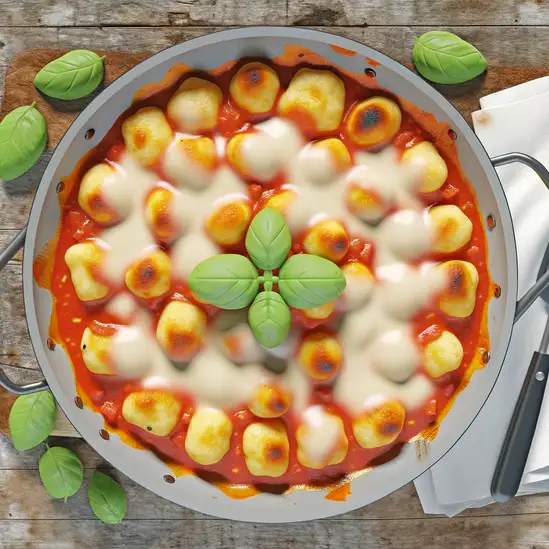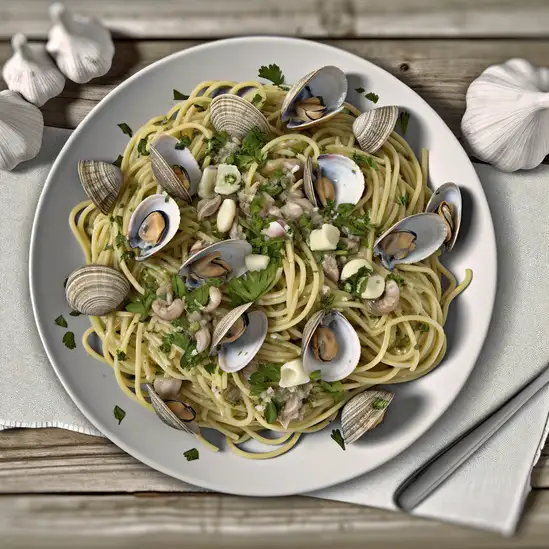



If you ever find yourself wandering through Italy,Pompei is one of those places that grabs you by the heart and doesn’t let go. There’s this incredible feeling of stepping back in time the moment you walk through its ancient streets,where every cracked stone and faded fresco whispers stories of a world frozen in an instant. The air carries a faint scent of sun-warmed earth mixed with the subtle aroma of fresh espresso from nearby cafes,inviting you to pause and soak it all in. As you explore the ruins,your footsteps echo softly against the walls of once-bustling homes and grand villas,and you can almost hear the distant chatter of a marketplace or the laughter of children playing in the forum. The vibrant colors of mosaics and the delicate details of frescoes still cling to the walls,reminding you of the artistry and life that thrived here before the eruption. It’s humbling and awe-inspiring all at once. Beyond the ruins,Pompei’s modern town pulses with warmth and charm. Locals greet you with genuine smiles,and the trattorias serve up mouthwatering dishes—imagine biting into a slice of pizza topped with fresh mozzarella and sun-ripened tomatoes,paired with a glass of crisp local wine. The blend of ancient history and lively present-day culture makes Pompei feel alive in a way few places do. Trust me,it’s a journey that stays with you long after you leave.
The information on this page is currently being reviewed by Tripkliq and should be used as a guide only
Eng word: Hello
Eng pronunciation: chow
Local language: Ciao
Eng word: Goodbye
Eng pronunciation: ah-ree-veh-DEHR-chee
Local language: Arrivederci
Eng word: Thank you
Eng pronunciation: GRAH-tsee-eh
Local language: Grazie
Eng word: How much
Eng pronunciation: KWAN-toh KOH-stah
Local language: Quanto costa
Eng word: Toilet
Eng pronunciation: BAHN-yo
Local language: Bagno
Eng word: Help me
Eng pronunciation: ah-YOO-tah-mee
Local language: Aiutami
Eng word: Yes
Eng pronunciation: see
Local language: Sì
Eng word: No
Eng pronunciation: noh
Local language: No
Eng word: Excuse me
Eng pronunciation: SKOO-zee
Local language: Scusi
Pompeii was originally founded by the Osci in the 7th or 6th century BC and later became a Roman colony in 80 BC after being dominated by various rulers.
In 79 AD, the city was buried under 4 to 6 meters of volcanic ash and pumice after the catastrophic eruption of Mount Vesuvius, preserving it in time.
Pompeii was rediscovered in 1748 by the Spanish military engineer Rocque Joaquin de Alcubierre, bringing invaluable insights into Roman life.
Established in 1873, the Antiquarium provides visitors a comprehensive view of Pompeii's daily life through its collection of artifacts and murals.
Built around 80 BC, the Amphitheatre is one of the oldest surviving Roman amphitheatres, reflecting the city's vibrant social and cultural life.
One of Pompeii's most luxurious residences, the House of the Faun is renowned for its elaborate mosaics, including the famous Alexander Mosaic.
Dating back to the 2nd century BC, this is one of the city's oldest religious buildings, devoted to the worship of Apollo, reflecting the blend of Greek and Roman cultures.
This main street was Pompeii's commercial hub, lined with shops and taverns, showcasing the bustling life of its inhabitants before the eruption.
An expansive athletic field surrounded by porticoes, the Great Palaestra served as a training ground for athletes, illustrating the importance of physical fitness to the Pompeians.
In Pompei, the most common Power Adaptor is Type C, Type F, Type L.







A classic Neapolitan pizza characterized by its soft, chewy crust, topped with San Marzano tomatoes, fresh mozzarella, basil, and a drizzle of olive oil.

Soft potato dumplings baked with tomato sauce and melted mozzarella cheese, originating from the nearby Sorrento region.

Layers of fried eggplant, tomato sauce, and cheese, baked to perfection, showcasing the rich flavors of Southern Italian cuisine.

A simple yet flavorful pasta dish made with spaghetti, fresh clams, garlic, olive oil, and parsley, often enjoyed along the Amalfi Coast.

A traditional Neapolitan Easter pie made with a sweet pastry crust filled with a mixture of cooked wheat, ricotta cheese, eggs, and flavored with orange blossom water.

A mixed fried seafood platter that includes calamari, shrimp, and small fish, typically served with lemon and a side of tartar sauce.
Naples feels like stepping into a living,breathing storybook where every street corner hums with life and history. The city’s energy is raw and unfiltered—imagine narrow alleys bursting with the aroma of fresh espresso and wood-fired pizza,while the chatter of locals spills out from bustling cafés. It’s a place where the past and present collide beautifully:ancient ruins nestle beside vibrant markets,and baroque churches stand tall amid colorful,graffiti-splashed walls. Walking through Naples,you can almost taste the city’s soul in the salty sea breeze mingling with the scent of basil and ripe tomatoes.
What really grabs you is Naples’ character—bold,unapologetic,and fiercely proud. The people here have a warmth that’s instantly welcoming,whether they’re sharing stories over a slice of the world’s best Margherita pizza or guiding you to a tucked-away viewpoint overlooking the shimmering Bay of Naples. The city’s soundtrack is a lively mix of street musicians,church bells,and the occasional honk of scooters weaving through traffic,creating a rhythm that’s uniquely Neapolitan.
And then there’s the food—oh,the food! It’s not just a meal; it’s a celebration. From the first bite of a perfectly blistered pizza to the sweet,creamy delight of sfogliatella,every flavor tells a story. Naples invites you to slow down,savor the moment,and dive headfirst into its vibrant culture. Trust me,once you’ve wandered its streets and tasted its flavors,Naples stays with you long after you leave.
Imagine stepping onto Capri and instantly feeling like you’ve wandered into a sun-drenched dream. The island hums with a relaxed yet vibrant energy—where the scent of salty sea air mingles with blooming bougainvillea and freshly brewed espresso. As you stroll through the narrow,cobbled streets of Capri town,you’ll hear the soft chatter of locals and the clinking of glasses from cozy piazzas,inviting you to slow down and savor the moment.
What makes Capri truly unforgettable is its stunning blend of natural beauty and timeless elegance. Towering limestone cliffs plunge dramatically into the turquoise waters below,while the famous Faraglioni rocks stand like ancient sentinels just offshore. You can’t help but be drawn to the island’s iconic Blue Grotto,where sunlight filters through underwater caves,casting an otherworldly glow that feels almost magical.
Capri’s character is a mix of old-world charm and chic sophistication. You’ll find artisans crafting delicate handmade sandals,vibrant markets bursting with fresh lemons and fragrant herbs,and trattorias serving up the freshest seafood paired with crisp local wines. Whether you’re sipping a limoncello on a sunlit terrace or wandering the lush gardens of Villa San Michele,there’s a sense of timelessness here that wraps around you like a warm embrace. Trust me,Capri isn’t just a place to visit—it’s a feeling you carry with you long after you leave.
Imagine stepping into a sun-drenched postcard where every corner of Sorrento feels like a warm embrace. This town,perched on cliffs overlooking the shimmering Bay of Naples,hums with a relaxed yet vibrant energy that instantly makes you want to slow down and savor the moment. As you wander through its narrow,cobbled streets,the air is thick with the scent of blooming lemon trees and salty sea breeze,mingling with the irresistible aroma of freshly baked focaccia and rich espresso from cozy cafés.
Sorrento’s charm lies in its effortless blend of old-world Italian character and lively seaside spirit. Locals chat animatedly in piazzas,their voices rising and falling like music,while colorful fishing boats bob gently in the harbor below. The pastel-hued buildings,draped with bougainvillea,create a cheerful backdrop to the daily rhythm of life here. You’ll find yourself drawn to the small artisan shops selling hand-painted ceramics and jars of golden limoncello,a local specialty that tastes like sunshine in a glass.
What really makes Sorrento unforgettable is how it invites you to slow down and truly taste life—whether that’s through a leisurely meal of fresh seafood paired with a crisp white wine,or simply sitting on a terrace watching the sun melt into the sea. It’s a place where every sense is awakened,and every moment feels like a celebration of the simple,beautiful pleasures of Italy.
Imagine stepping into a sun-drenched postcard where every corner of Amalfi feels like a warm embrace. The town perches dramatically on cliffs that tumble into the sparkling turquoise sea,and as you wander its narrow,winding streets,you’re greeted by the scent of fresh lemons mingling with salty ocean air. There’s a gentle hum of life here—boats bobbing softly in the harbor,locals chatting animatedly over espresso,and the distant chime of church bells weaving through the Mediterranean breeze.
Amalfi’s charm isn’t just in its breathtaking views but in its rhythm. It’s a place where time slows down just enough for you to savor a slice of creamy,tangy lemon cake or sip a glass of crisp white wine while watching fishermen haul in their catch. The vibrant colors of bougainvillea spill over ancient stone walls,and the lively piazza pulses with a mix of tourists and locals sharing stories and laughter.
What really makes Amalfi special is its blend of history and heart. The grand cathedral with its intricate mosaics stands as a testament to centuries of culture,while the small family-run trattorias invite you to taste recipes passed down through generations. It’s a place that feels alive,where every meal,every sunset,and every smile tells a story you’ll want to carry with you long after you leave.
Imagine stepping into a sun-drenched postcard where pastel houses cling to cliffs like colorful jewels,and the scent of lemon blossoms mingles with salty sea air. That’s Positano for you—a place that feels like a dream you don’t want to wake up from. Walking through its narrow,winding streets,you hear the gentle chatter of locals,the clinking of espresso cups,and the distant splash of waves against the rocks below. It’s a town that invites you to slow down,savor every moment,and soak in the effortless beauty around you.
The charm of Positano isn’t just in its stunning views but in its rhythm—the way the sunlight dances on the turquoise water,how the vibrant bougainvillea spills over balconies,and the warmth of the people who greet you with genuine smiles. You’ll find yourself lingering over fresh seafood pasta at a terrace restaurant,the taste of ripe tomatoes and fragrant basil bursting in every bite,while the sea breeze cools your skin. Evenings here are magical,with lanterns flickering and the soft hum of live music drifting through the air.
What makes Positano truly special is its blend of natural beauty and heartfelt culture. It’s a place where art,history,and everyday life intertwine seamlessly. Whether you’re exploring tiny artisan shops,hiking the cliffs for breathtaking views,or simply watching the sunset paint the sky in shades of pink and gold,Positano leaves an imprint on your soul. Trust me,once you’ve experienced its unique spirit,you’ll carry a piece of it with you long after you leave.
Imagine stepping into a city where every corner hums with stories that have shaped the world. That’s Rome for you—a place where ancient ruins stand shoulder to shoulder with bustling piazzas,and the air carries a mix of fresh espresso,baked bread,and the faintest hint of blooming jasmine. Walking through its sun-dappled streets,you’ll hear the lively chatter of locals debating over football,the clinking of glasses in cozy trattorias,and the distant melody of a street musician’s violin weaving through the afternoon breeze.
Rome’s character is a beautiful blend of timeless history and vibrant everyday life. You can lose yourself wandering through the Colosseum’s shadows,imagining gladiators’ roars,then find yourself sipping a velvety cappuccino in a tiny café where the barista greets you like an old friend. The city’s soul is in its people—warm,passionate,and effortlessly proud of their heritage. It’s in the way the light hits the golden domes at sunset,or how the fountains splash cool water on a hot summer day,inviting you to pause and soak it all in.
And the food—oh,the food! Fresh pasta tossed with rich,tangy tomato sauce,the crunch of a perfectly baked pizza,and gelato that melts on your tongue like a sweet secret. Rome isn’t just a place to see; it’s a place to feel,taste,and live. Trust me,once you’ve wandered its cobblestone streets and tasted its flavors,you’ll carry a piece of Rome with you long after you leave.
Fraudsters sell fake tickets to the archaeological site or other attractions, leaving tourists unable to enter.
Scammers pose as parking attendants and charge tourists for parking in free or unauthorized areas.
Scammers pose as official tour guides and offer overpriced or low-quality tours with little historical or cultural value.
Shops near tourist hotspots sell low-quality souvenirs at inflated prices, targeting unsuspecting tourists.
Thieves operate in crowded areas, such as the archaeological site or train stations, to steal wallets, phones, and other valuables.
Some restaurants near tourist areas may inflate bills or add hidden charges, especially if tourists do not check the menu carefully.
Street vendors sell counterfeit goods or low-quality items at high prices, often pressuring tourists into buying.
Unlicensed or dishonest taxi drivers may overcharge tourists by taking longer routes or not using the meter.
Unlicensed operators offer tours of the ruins that are either inaccurate or illegal, sometimes leading to fines for participants.
The possession, use, and trafficking of illegal drugs are strictly prohibited in Pompei, as in the rest of Italy. Penalties for drug-related offenses can be severe, including fines and imprisonment. Even small amounts of illegal substances can lead to legal consequences. Tourists should be aware that Italy has stringent drug laws and should avoid any involvement with illegal drugs.
In Pompei, Italy, smoking is generally allowed in outdoor public spaces. However, smoking is prohibited in enclosed public places, including restaurants, bars, and public transportation. There are designated smoking areas in some public places, and it is important to respect these zones. Violations can result in fines.
Vaping is subject to similar regulations as smoking in Pompei. It is prohibited in enclosed public spaces such as restaurants, bars, and public transportation. Vaping in designated non-smoking areas is also not allowed. Tourists should look for designated vaping areas and adhere to local regulations to avoid fines.
What are other people saying about Pompei?
Recent Social posts about Pompei
There is nothing to show you for now.